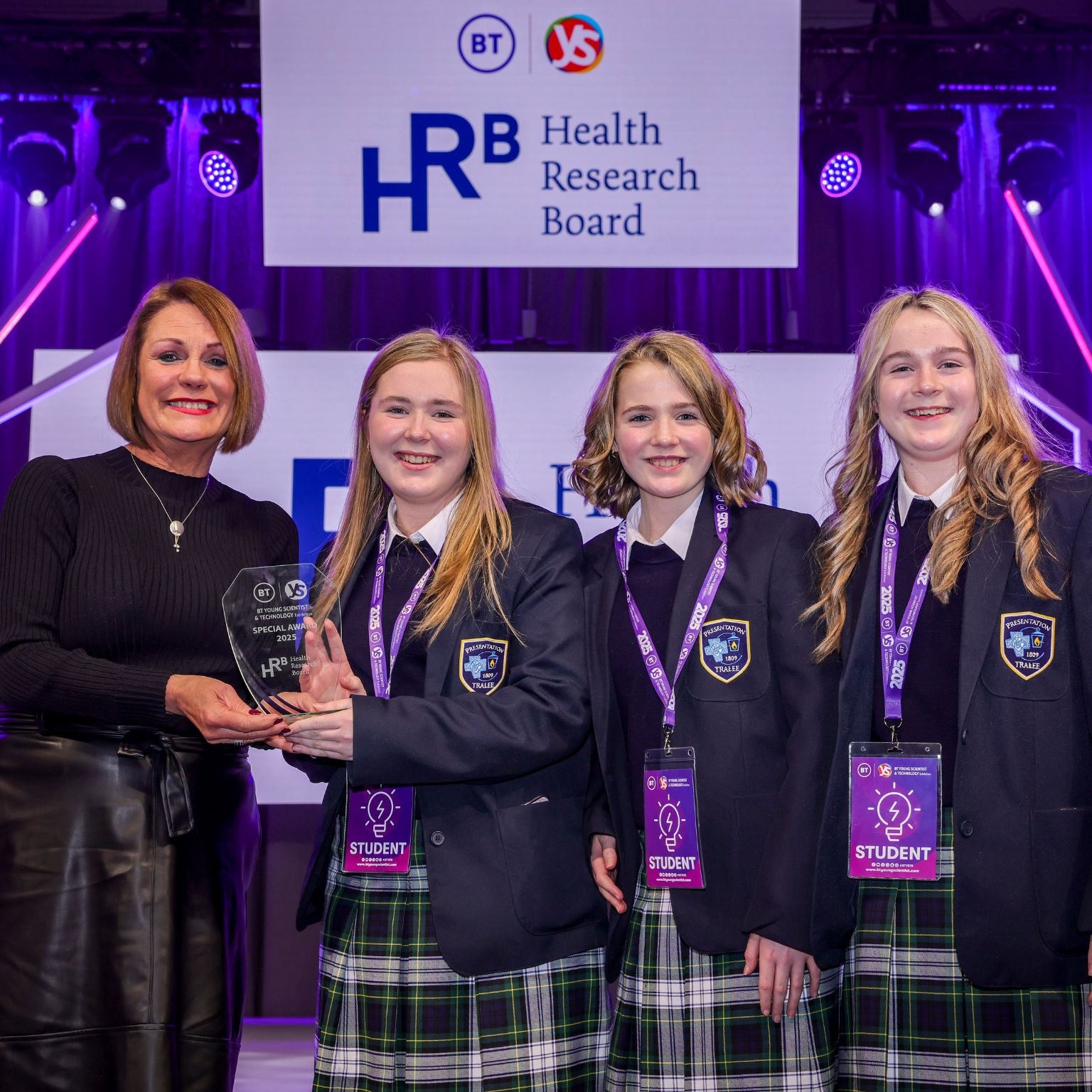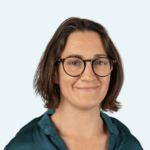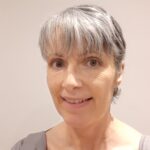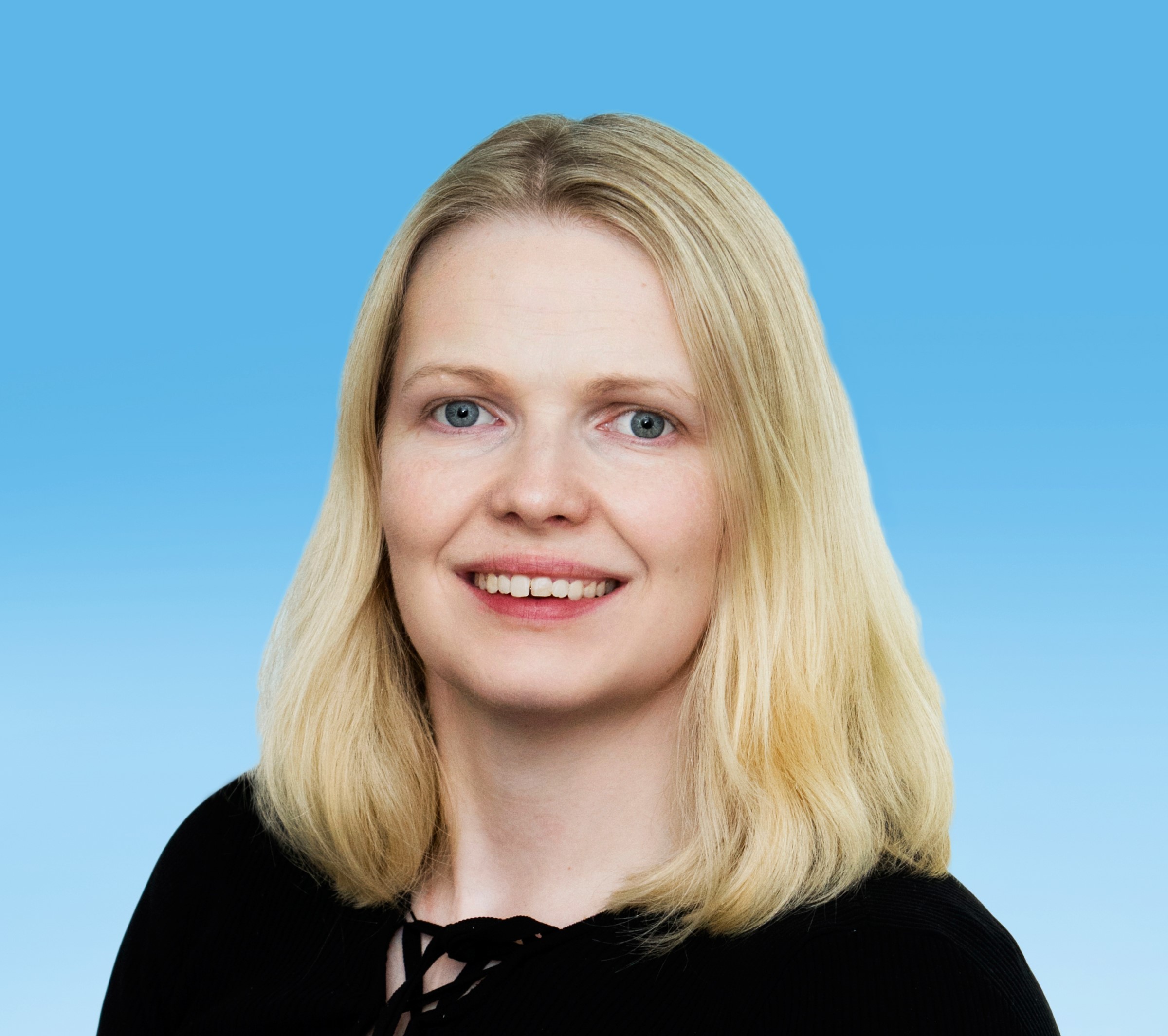BTYSTE winners join the dots with app to support health emergency response
At the BT Young Scientist and Technology Exhibition, Tralee sisters Ciara, Saoirse and Laoise Murphy scooped the HRB prize and overall title with their app to support emergency responders.
6 min read - 30 Jan 2025

In a healthcare emergency, time matters. So too does having the right information, so that emergency services can find the patient quickly and deliver appropriate care.
Enter a new medical assistance app developed by three sisters attending Presentation School Tralee in Kerry. Called Aid Care Treat, or ACT, the mobile app can relay location and relevant medical information to emergency services in Ireland.
The innovation, which was sparked when the sisters witnessed a family emergency, scooped not only the HRB Special Award recognising excellence in health research but also the overall prize at the BT Young Scientist & Technology Exhibition (BTYSTE) earlier this month.
Top awards
“It has been a whirlwind,” says Ciara (17) of the sisters’ hectic schedule since being announced as winners of the BTYSTE at the RDS on January 10th.
Ciara and her sister Saoirse (15) were no strangers to the awards ceremony, having won the overall group runner-up prize last year for an earlier version of the ACT project.
But this year, their sister Laoise (12) joined them on the project. And as the three sisters sat with hundreds of other students on tenterhooks, waiting to hear names called out for prizes, the Murphys heard they had won the HRB Special Award.
“We were absolutely thrilled to win this particular award,” says Ciara. “We had looked at the various special awards, and I said multiple times to the girls that it was [the HRB] one I really wanted to win because of the relevance to the research and the work we had done. The reports that [the HRB does] are so fantastic, that is why we were truly delighted.”
But there was even more to come. The sisters were soon back up on stage to accept the overall prize of BT Young Scientists of the Year for 2025 from Minister for Education Norma Foley and BT Ireland Managing Director Shay Walsh.
“It was surreal, a euphoric moment,” says Ciara. “And then afterwards, talking to the past winners and the judges, it was nice to see everyone on the other side after experiencing it all, being a participant and then a few hours later being in a reception and them commenting on our work.”
An app to get help quickly
The work in question focuses on an app that can potentially save lives in a medical emergency.
“For our project we developed a medical emergency response application called ACT, which stands for AID, CARE, TREAT,” explains Saoirse. “And essentially that is the vision, that is the goal, to aid, care and treat a patient in the event of a medical emergency whilst also providing critical data, personal and medical information and geolocation, longitude and latitude co-ordinates, to the emergency services,” she says.
The Murphys got the idea for the app when they witnessed a medical emergency that hit close to home, she recalls.
“A relative of ours collapsed after running a 200km ultra-marathon in September 2022, and despite being surrounded by six individuals, none of us were equipped with the knowledge or tools to respond efficiently, and acknowledging that the majority of people are likely to either experience or encounter a medical emergency at least once in their lifetime, we set out in 2023 to develop an app that would help to aid, care and treat an injured person in the event of a medical emergency.”
A new phase of research
Discussions with judges and press at BTYSTE 2024 encouraged the sisters to develop the project further, and that’s when Laoise came on board.
Over the course of almost a year, the three of them researched, built and tested the ACT app, which provides the location of an emergency and medical information about the person involved.
“We have two key features in the app that are transmitted from the downloader’s device to the emergency services,” explains Saoirse.
“One is geolocation, so the provision of correct information location accurate to within one metre, and the other is the provision of personal and medical information. This is sent from a personal information page again from the downloader’s phone, and this would be sent to the emergency services to mitigate the time risk.”
ACT also provides instructional guides, available in various languages, to help bystanders to aid the patient while they wait for the emergency services.
Careful research was needed throughout, notes Ciara, and the students engaged with the National Ambulance Service, An Garda Síochána, the HSE, eHealth Ireland, the Department of Health and medical students at RCSI University of Medicine and Health Science.
“The mission that the HRB has is to support the research to improve people’s health and to create solutions for those problems, and we conducted a very thorough customer discovery phase and we did extensive research to ensure that all the challenges faced by bystanders and the emergency services were addressed by our project,” says Ciara.
“We had a specific focus to ensure that they were the gaps we were addressing throughout the whole app development process.”
Joining the dots
Integrating the ACT app with the national system posed a challenge for the trio, who needed to get to grips with APIs (application programming interfaces) and how to integrate their technology with the dispatch system for emergency responders.
“What we tested was the back end of the system, to ensure that the personal information page and the geolocation co-ordinates could be sent from ACT to the systems that are in place for emergency services,” explains Ciara.
“We needed to ensure that the transmission from an end-user’s device was safe, secured and encrypted, and could be received by a computer-aided dispatch system, and that was successful.”
The future is bright
Winning the top prize at BTYSTE means the students will represent Ireland at the European Union Contest for Young Scientists (EUCYS) this year in Riga, Latvia, and they will visit the World Expo, in Osaka, Japan.
These are stops along a longer journey for the students, who say they will continue to develop and refine their potentially life-saving technology.
The app means the world to us,” says Saoirse, reflecting on what she has learned.
“We spent two years of our lives developing it and bringing it from what was a concerning incident and now into something that can help and guide people in the future. There are some things you can’t learn in school, you have to go to the real world to experience first-hand, and we got to do that.”
And for Ciara, the focus is on what the project will mean for their future.
“The experience of the last year and the RDS were just the most phenomenal learning experiences for all of us,” she says.
“Laoise being only 12, the world that she has now been opened up to, and myself and Saoirse, the skills that we have learned, what we will be taking now into the workplace, writing the report books, actually conducting the research, the technical development and then, as well, the memories that we have made – they will last a lifetime.”
6 min read - 30 Jan 2025



